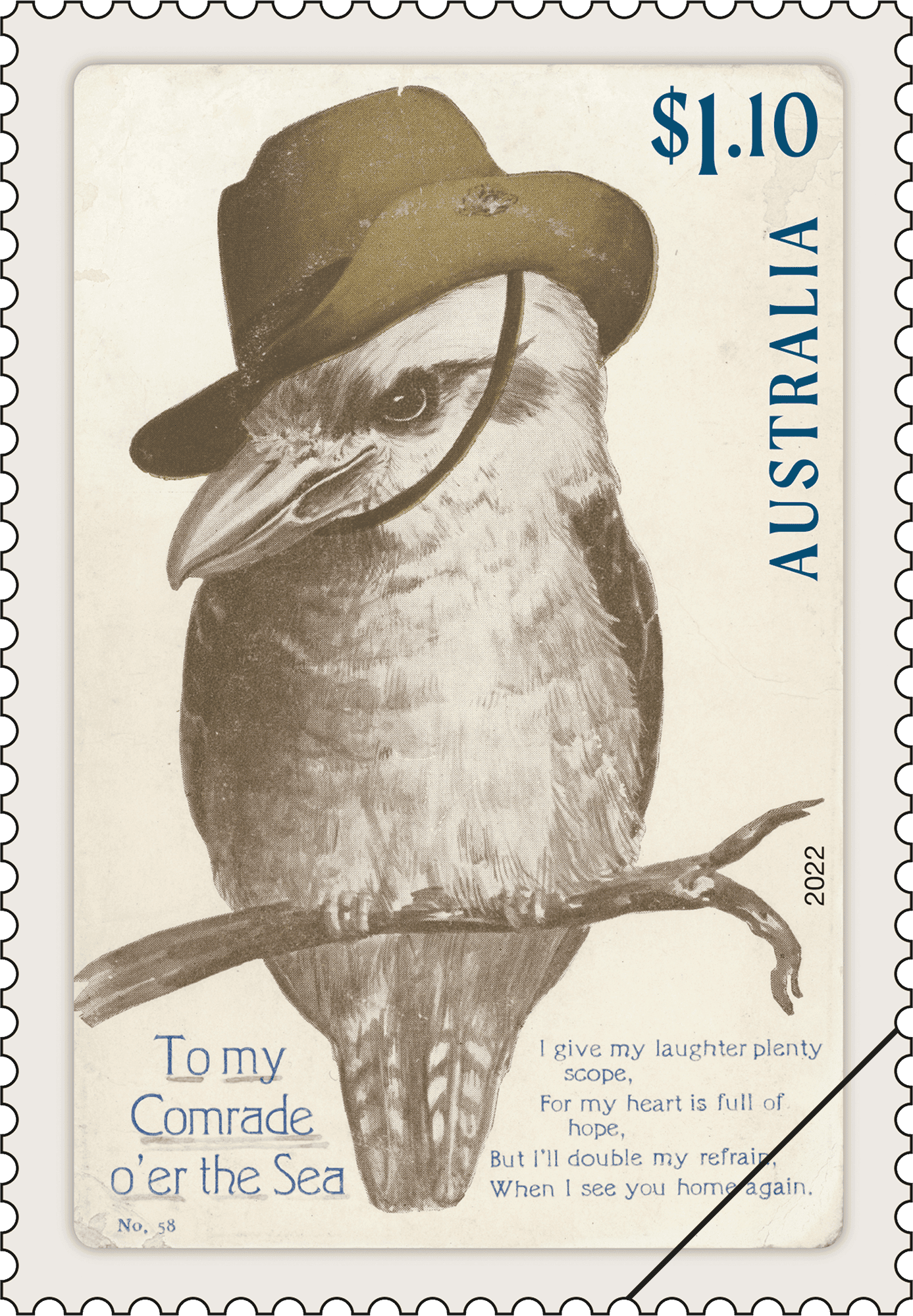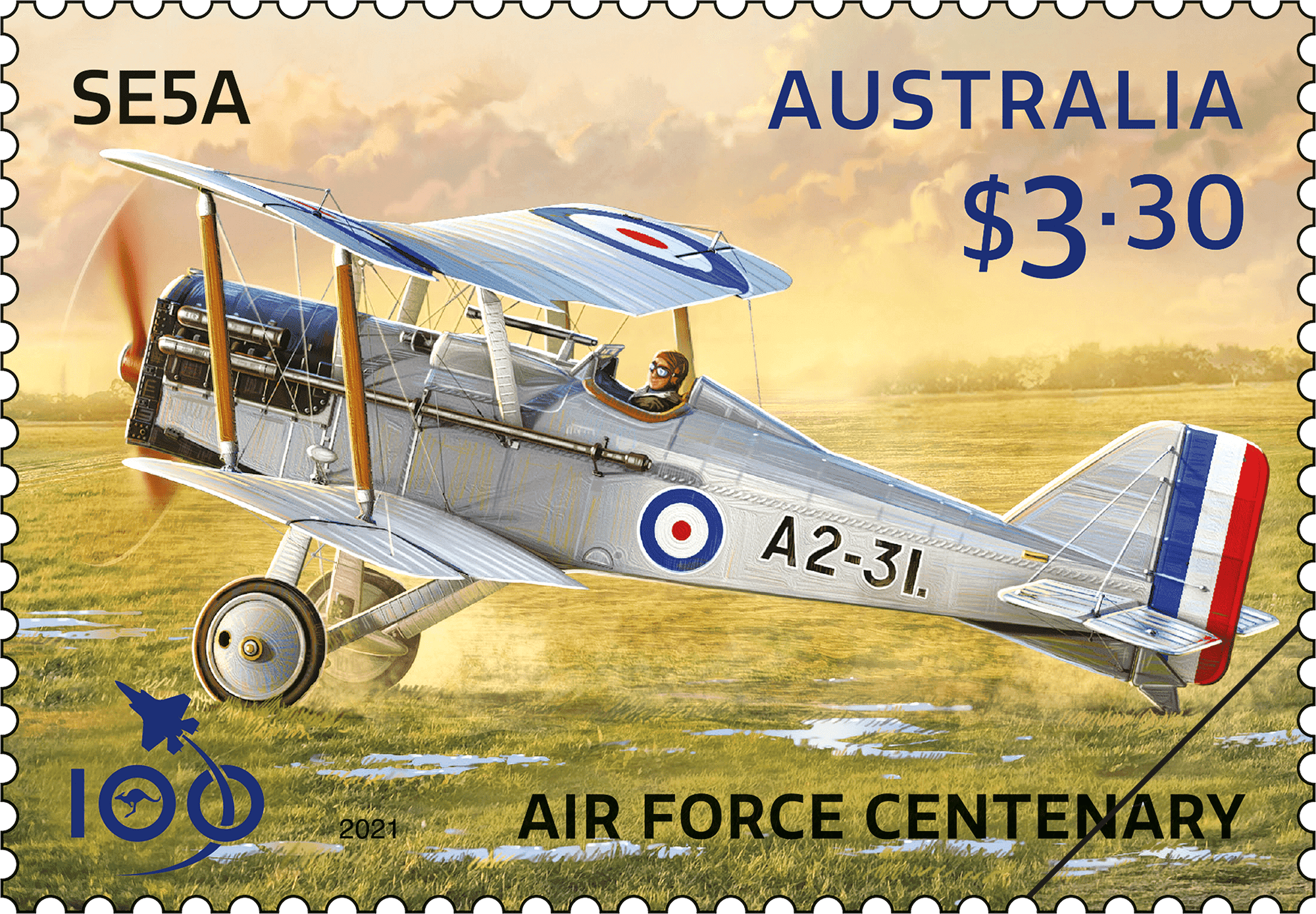
Set of Anzac Day 2019 stamps
This set of stamps contains the two stamps from the Anzac Day 2019 stamp issue.
The legend of the Anzacs is still very much alive today in Australia, as evidenced by the important national status given to Anzac Day, held annually on 25 April. This date marks the anniversary of the first major military action fought by Australian and New Zealand forces during the First World War – the landing at Gallipoli and the attempted capture of Constantinople (now Istanbul, Turkey), which took eight months and cost more than 8,100 Australian lives. Although a failure in military terms, what emerged was the concept of the “Anzac spirit”, which many argue helped to shape Australia’s emerging national identity.
Anzac Day 1919 was the first to be commemorated following the World War I Armistice of 1918. Continued were the patriotic traditions that began at the inaugural Anzac Day of 1916, such as services and parades, but there was also a sombre tone, in remembrance of those who would never return from the battlefields.
In London, Anzac Day 1919 became a triumphant farewell for the Australian and New Zealand troops. Five thousand troops, representing all arms of the Australian Imperial Force, marched from the Mall to Bunhill Fields, passing Australia House, where the Prince of Wales took the salute. There was also an aerial display over London conducted by officers of the Australian Flying Corps and an official reception in the evening.
“Peace” was a major theme of the year 1919. The official WWI peace treaties were signed on 28 June 1919, after the famous peace conference held at Versailles, France. For the allies, the treaty meant the start of official peace celebrations, most notably Peace Day, which occurred on Saturday 19 July 1919 and featured celebratory parades throughout the British Empire (though also some rioting from returned servicemen unhappy with their conditions). Every child in Australia aged up to 14 years of age (and up to 16, where parents were in the armed forces) was also presented with the School Children’s Peace Medal which included the phrase “the triumph of liberty and justice”.
The stamps
Designed by Lynette Traynor of the Australia Post Design Studio, this stamp issue presents covers of two historical souvenir programs from 1919 Anzac Day events. The programs recognise the relevance of “peace” in Anzac Day commemorations that year, both in Australia and overseas.
| Issue date | 16-April-2019 |
| Issue withdrawal date | 31-October-2019 |
| Denominations | 1 x $1, 1 x $3 (international) |
| Stamp design | Lynette Traynor, Australia Post Design Studio |
| Product design | Jo Mure, Australia Post Design Studio |
| Paper - gummed | Tullis Russell |
| Paper: self-adhesive | Securepost MC90 |
| Printer | Egotrade |
| Printing process | Offset lithography |
| Stamp size | 26 x 37.5 |
| Minisheet size (mm) | 135 x 80 |
| Perforations | 13.86 x 14.6 |
| Sheet layout | Module of 50 |
| FDI postmark | Canberra, ACT 2601 |
| FDI withdrawal date | 15-May-2019 |

The domestic-rate stamp features the cover of a booklet published by Victorian Branch of the Returned Soldiers and Sailors League for Anzac Memorial Day, 1919. The image incorporates a figure who appears to be based on Pax, the Roman Goddess of Peace. The booklet’s introduction talks of the recent victory of democracy over militarism and Australia’s proven determination to fight for the “sacred cause of liberty” at Anzac Cove in 1915. It also emphasises importance of looking after the widows and dependents of the fallen.
The cover artwork, which contrasts the dark skies of war with the sunny skies of peace, was by Goldsworthy and Davey, a Melbourne firm that also produced ornate military service certificates for returned servicemen during this era. The stamp image is courtesy Waverley RSL Sub-Branch, Returned & Services League of Australia, Victorian Branch.

The souvenir program featured on the international-rate stamp, was produced for a 1919 Anzac Day event held for allied soldiers at an Australian depot in Rouelles, France. The day included sporting competitions and music performances and was attended by many high-ranking officials. As well as themes of victory and peace, the cover design portrays the long-standing gratitude felt by the French people for the efforts of Australian troops during WWI, which continues to this day.
The artwork is by John C Goodchild (1898–1980) who, after serving as a stretcher bearer in the Royal Australian Medical Corps, was hospitalised in Rouelles in 1918. Goodchild became a significant artist, including being appointed as an official Australian war artist during World War II. The stamp image is courtesy Picture Ipswich, and Ipswich RSL Sub-Branch, Returned & Services League of Australia, Queensland Branch.
Learn more about the life and work of John C Goodchild in our article Australia Remembers in a year of peace.

This set of stamps contains the two stamps from the Anzac Day 2019 stamp issue.

The Anzac Day 2019 stamp pack contains the two stamps from the stamp issue presented in high quality folder.

The Anzac Day 2019 minisheet consists of the two stamps from the issue incorporated into a miniature stamp sheet.

This maxicard set contains the two maxicards from the Anzac Day 2019 stamp issue.

Issue date: 12 April 2022

Issue date: 09 February 2021

Issue date: 23 October 2018

02 October 2018
This content was produced at the time of the stamp issue release date and will not be updated.